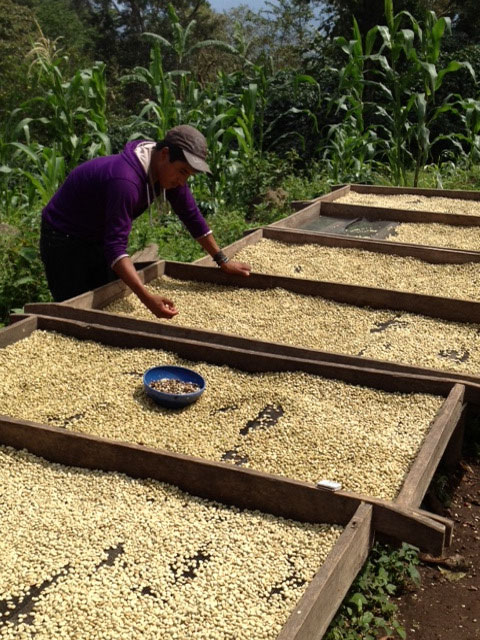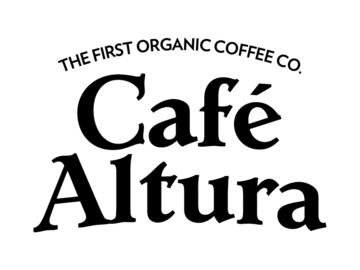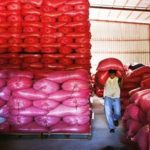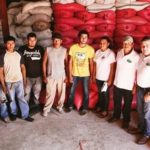Organic Honey Process Coffee
Unfortunately, coffee doesn’t just fall off a tree and magically make its way into your cup. Farmers have to process it before delivering it to consumers. There are several different processing methods. Organic honey process coffee is one of the most unique (and delicious) processing options available. In order to understand how farmers make this coffee, you need to have a better understanding of coffee and coffee processing in general. Then, you will have a clear picture of how farmers manage to get the sweet taste of honey processed coffee into your cup.

The Coffee Bean
You can’t have organic honey processed coffee, or any other type of coffee for that matter, without a coffee tree. While some people think that coffee trees sprout coffee beans, it’s a little more complex than that. Coffee trees actually grow berries. These berries are referred to as coffee cherries because they turn bright red when they are ripe. They have a sweet pulp underneath the bitter skin, and mucilage underneath the pulp. This honey-like mucilage is sticky and sugary. Parchment is located under the mucilage, and it tasked with protecting the beans. Next, you have the silver skin, which adds an additional layer of protection to the coffee beans.
Now that you understand the anatomy of the coffee cherry, it’s time to look at the various processing methods.
Coffee Processing Methods
Farmers use dry, pulped natural, wet, and honey processing. Each of these processing methods impacts the way the coffee tastes.

Dry Process (Natural Method)
This is the oldest coffee processing method around. Farmers clean the whole coffee cherry and then spread it out to dry. They turn the cherries by hand and let them dry for up to four weeks. This only works in dry regions and is commonly used for Arabica coffee.
Pulped Natural Hybrid
Typically used in Brazil and Indonesia, the pulped natural process is also referred to as a semi-washed, semi-dry, or wet-hulled process. The outer skin of the cherry is removed. The mucilage and silver skin stay on the cherry while it goes into storage for a day. Then, the farmers wash the mucilage off and dry the coffee in the sun until its moisture content falls between 30 and 35 percent.
Wet Process (Washed Method)
During the wet process, farmers put the beans in a vat, where they shake and wash them. Then, they put the beans into a pulping machine. Once the beans are pulped, they ferment and then they are washed again. During this process, the remaining pulp and mucilage are removed from the coffee.
Honey Process
Manufacturers who use the honey process method remove the cherry’s skin and pulp, while leaving some of the mucilage in place. Then, they put the coffee on raised bed drying tables.
This process impacts the coffee’s acidity. It doesn’t have much time to ferment before the mucilage dries, so it is more acidic than a pulped natural hybrid coffee. At the same time, it is significantly less acidic than natural dried or washed coffee. That makes it a good choice for people who want a mildly acidic coffee. People can still get the benefits of bright, acidic coffee without the drawbacks that include heartburn and upset stomachs.
Taste of Honey Processed Coffee
People enjoy honey processing because of the taste. It has a distinct sweetness that you will not find in other types of coffee. You will notice fruit notes and a sweet acidity when you drink this coffee. You will also enjoy a sweet, acidic aftertaste.
The amount of sweetness depends on the degree of mucilage in the coffee. Some manufacturers inadvertently wash off some of the mucilage, while others take some off on purpose to prevent issues with fermentation. The degree of honey ranges from 40 percent to 100 percent. The higher the degree of honey, the sweet and brighter the taste will be.
Honey Processing and the Environment
Honey processed coffee doesn’t just taste delicious. It has environmental benefits as well.
While the washed processing method wastes a lot of water, honey processing allows manufacturers to conserve natural resources. This is very important in some of the far off lands that manufacture coffee.
It saves electricity. In other processing methods, manufactures use mechanical dryers. With this process, they use drying beds, which dry the beans out in the sun. This eliminates the need for fossil fuels.
It also cuts down on gas since farmers don’t have to send the coffee off to processing plants. Honey processing is usually done right onsite.
Honey processing has changed the way people drink coffee. Now, they don’t have to load their coffee up with sugar or sweeteners to get a sweet taste. They can enjoy that sweet taste the natural (and guilt free) way with honey processed coffee.





